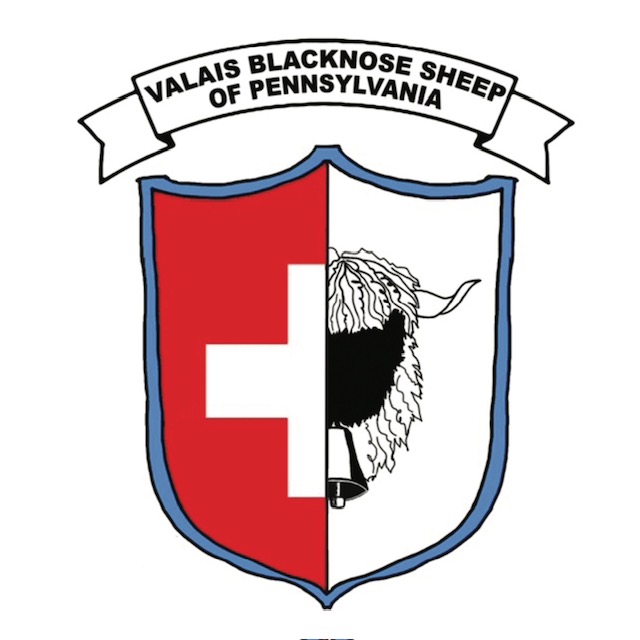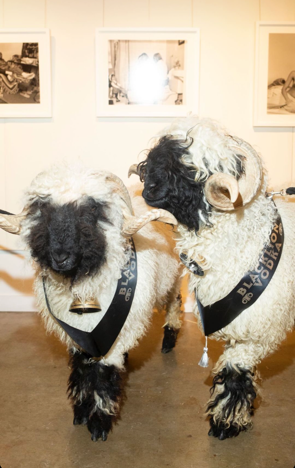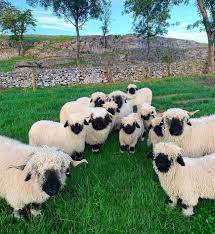Valais Blacknose Breed Standards Guide
History of the Blacknose
The Valais Blacknose sheep originates from the Valais canton of Switzerland. Native to the Upper Valais region, these sheep graze in the Alps during the summer months (June–September). Though housed in winter, the Blacknose is a hardy breed well-adapted to the harsh conditions of mountain life, even in summer.
Historical evidence suggests the Blacknose has existed since the 15th century. Over time, it has evolved significantly from its early resemblance to the Scottish Blackface into the majestic breed we see today.
In Switzerland, approximately 13,700 registered Blacknose sheep are listed in the breed flock book. As a large, slow-maturing breed, Valais Blacknose ewes are usually not bred until over 12 months of age, with lambing occurring at 18–24 months. They are nonseasonal breeders, with a reproduction rate of 1.6 lambs per year, but natural breeding once per year is recommended.
Breed Characteristics
The Valais Blacknose sheep’s key characteristics are categorized into three areas: General Appearance, Conformation, and Wool.
General Appearance
The Blacknose sheep is recognized by its distinct markings and robust frame:
- Black Nose: Extends to the center of the head, connecting to the black surrounding the eyes. No gaps are permitted.
- Black Ears: Must connect seamlessly to the white of the head.
- Black Markings on Legs: Includes black “socks” on the hooves/ankle area and black spots on knees and hocks (spots may be asymmetrical).
- Tail Spot: Females have a black tail spot with a white gap (approximately finger-width). Males must not have a tail spot.
- Horns: Spiral outward from the head in both rams and ewes, with adequate spacing from the cheeks. Black stripes in the horns are acceptable.
- Scrotum (Males): May have black pigmentation, extending to the lower belly but not beyond the naval area.
Head & Neck
- Head: Well-proportioned and compact, with a broad forehead, wide mouth, and a pronounced “Roman nose.”
- Rams: Regal head shape, often with protuberances behind the horn base as they mature.
- Neck: Short, straight, and well-muscled.
Chest, Shoulders & Withers
- Wide and deep chest.
- Shoulders naturally align with the neck and chest.
- Well-spaced and wide withers.
- Rounded, proportioned rib cage.
Back & Loin
- Long, straight topline.
- Wide back and loin.
Pelvis, Abdomen & Hindquarters
- Medium-sized belly with slight hollows (paralumbar fossa).
- Wide, medium-length pelvis.
- Well-muscled hindquarters.
Size Standards
| Measurement | Females | Males |
|---|---|---|
| Height (2+ years) | 72–78 cm | 75–83 cm |
| Weight (2+ years) | 70–90 kg | 80–125 kg |
Conformation
Limbs
- Strong, sure-footed legs with solid hoof deportment.
- Free of structural defects such as bandy or knock knees.
Foundations
- Slight hock angulation.
- Short, strong pasterns (45-degree angle).
- Straight, sound joints with solid bone structure.
Gait
- Spacious, sure-footed, and wide-legged.
- Movement is even, stable, and mobile without swaying.
Wool Characteristics
- Texture: Soft fleece in lambs becomes coarser with age (fiber diameter: 28–38 microns).
- Staple Length: Approximately 10 cm based on 6 months’ growth.
- Shearing Frequency: Recommended twice per year.
- Fleece Weight (per 6 months):
- Lambs: 1–1.5 kg
- Ewes: 2.5–3 kg
- Rams: 2.5–3 kg
- Coverage: Uniformly white fleece covering the body, head, and legs.
- Legs: Thick, full wool coverage.
- Head: Long, natural wool.
- Tolerances: Some black fibers are acceptable on females’ necks and young males (up to 18 months).
Spitti (Reverse Markings)
Occasionally, purebred Valais Blacknose sheep produce offspring with reverse markings, referred to as “Spitti.”
- Spitti rams should be castrated and not used for breeding to maintain breed standards.
- Names for Spitti vary in Switzerland by region.
Castration Guidelines
1. Purpose
- Prevent undesired breeding and maintain flock standards.
- Manage flock dynamics and temperament in non-breeding males.
2. Timing
- Perform castration before six months of age to reduce stress and recovery time.
3. Methods
- Techniques include banding, surgical removal, or burdizzo clamp. Follow best practices and adhere to local regulations.
4. Post-Care
- Monitor for infection or discomfort.
- Provide pain relief if necessary.
- Keep castrated males in a calm environment during recovery.


